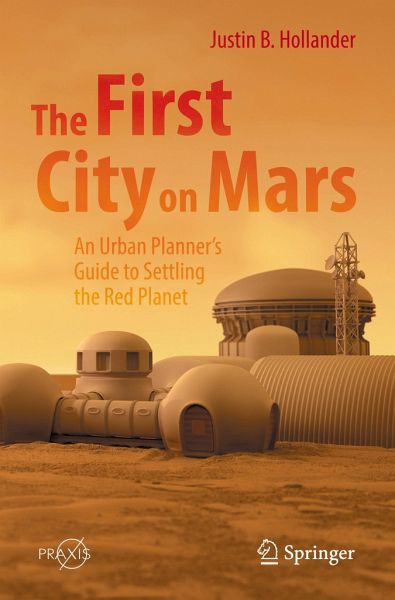
The First City on Mars: An Urban Planner's Guide to Settling the Red Planet

PAYBACK Punkte
14 °P sammeln!
Hundreds of novels, films, and TV shows have speculated about what it would be like for us Earthlings to build cities on Mars. To make it a reality, however, these dreamers are in sore need of additional conceptual tools in their belt-particularly, a rich knowledge of city planning and design.Enter award-winning author and Tufts University professor, Justin Hollander. In this book, he draws on his experience as an urban planner and researcher of human settlements to provide a thoughtful exploration of what a city on Mars might actually look like. Exploring the residential, commercial, industri...
Hundreds of novels, films, and TV shows have speculated about what it would be like for us Earthlings to build cities on Mars. To make it a reality, however, these dreamers are in sore need of additional conceptual tools in their belt-particularly, a rich knowledge of city planning and design.
Enter award-winning author and Tufts University professor, Justin Hollander. In this book, he draws on his experience as an urban planner and researcher of human settlements to provide a thoughtful exploration of what a city on Mars might actually look like. Exploring the residential, commercial, industrial, and infrastructure elements of such an outpost, the book is able to paint a vivid picture of how a Martian community would function - the layout of its public spaces, the arrangement of its buildings, its transportation network, and many more crucial aspects of daily life on another planet. Dr. Hollander then brings all these lessons to life through his own rendered plan for "Aleph," one of many possible designs for the first city on Mars.
Featuring a plethora of detailed, cutting-edge illustrations and blueprints for Martian settlements, this book at once inspires and grounds the adventurous spirit. It is a novel addition to the current planning underway to colonize the Red Planet, providing a rich review of how we have historically overcome challenging environments and what the broader lessons of urban planning can offer to the extraordinary challenge of building a permanent settlement on Mars.
Enter award-winning author and Tufts University professor, Justin Hollander. In this book, he draws on his experience as an urban planner and researcher of human settlements to provide a thoughtful exploration of what a city on Mars might actually look like. Exploring the residential, commercial, industrial, and infrastructure elements of such an outpost, the book is able to paint a vivid picture of how a Martian community would function - the layout of its public spaces, the arrangement of its buildings, its transportation network, and many more crucial aspects of daily life on another planet. Dr. Hollander then brings all these lessons to life through his own rendered plan for "Aleph," one of many possible designs for the first city on Mars.
Featuring a plethora of detailed, cutting-edge illustrations and blueprints for Martian settlements, this book at once inspires and grounds the adventurous spirit. It is a novel addition to the current planning underway to colonize the Red Planet, providing a rich review of how we have historically overcome challenging environments and what the broader lessons of urban planning can offer to the extraordinary challenge of building a permanent settlement on Mars.












